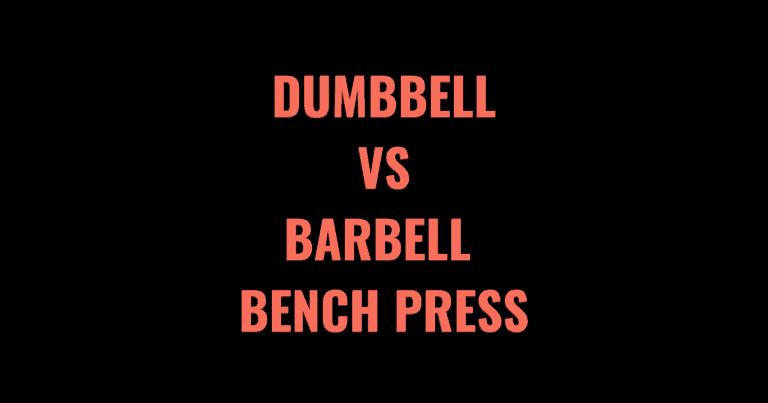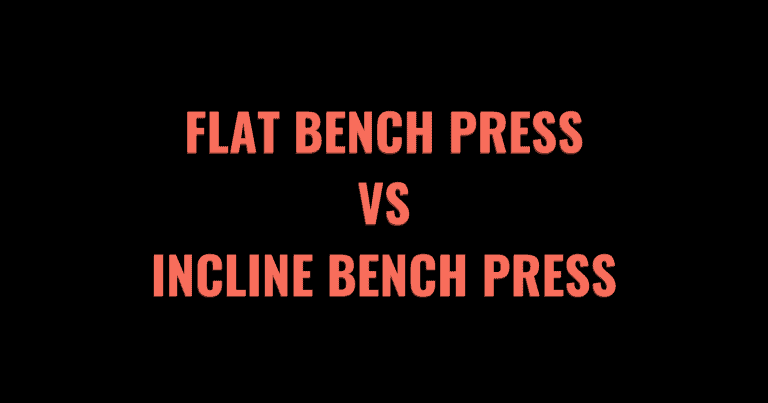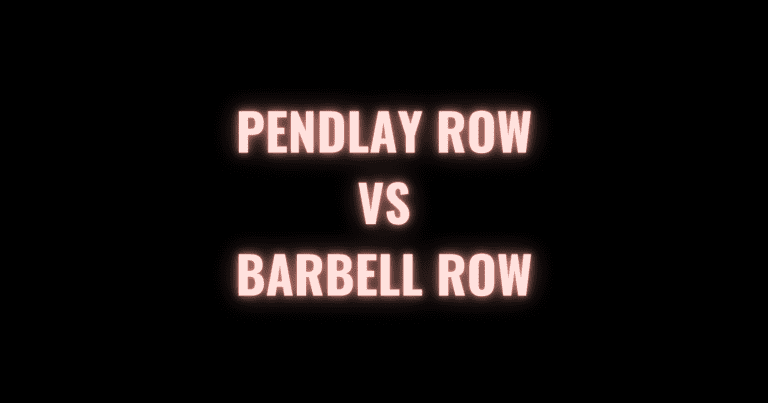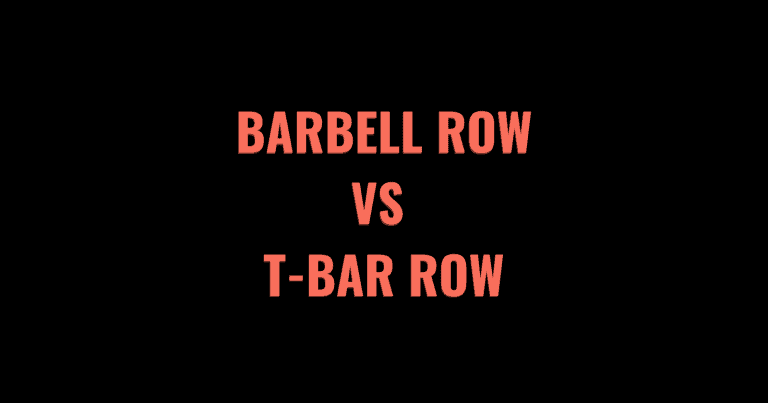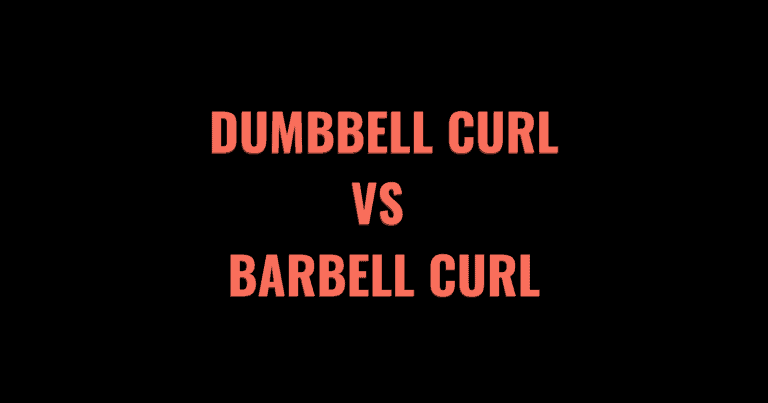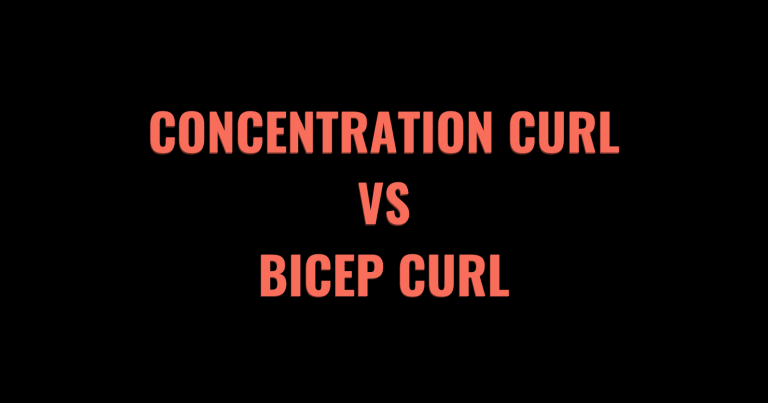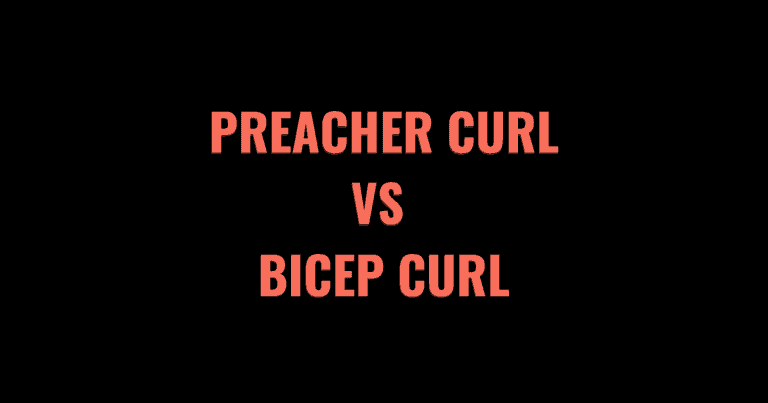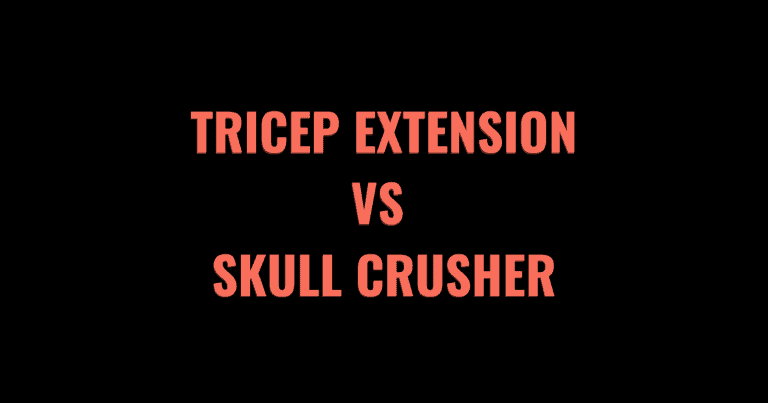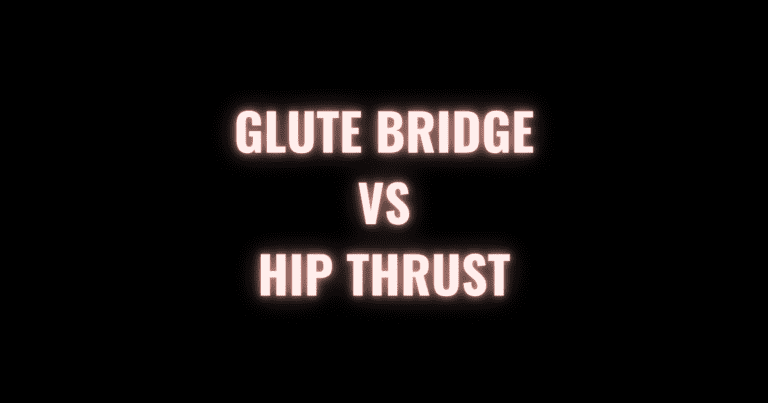Building strong, powerful hamstrings is a great way to improve the strength and musculature of your leg. Not only do big, round, hamstrings look great, they also form an essential part of the posterior chain. Strengthening the hamstrings can help you perform better in other lifts and translates well to everyday functional fitness.
Two popular types of hamstring pulling exercises are the glute-ham raise and the Nordic curl. Both exercises can do wonders for developing the size and strength of your hamstrings, but which one should you choose?
We’ll go over the main differences between the glute-ham raise and the Nordic curl, the pros and cons of each, and some useful form cues to help you decide which exercise will best meet your needs.
Table of Contents
- 1 Glute Ham Raise vs. Nordic Curl
- 2 Glute Ham Raise vs. Nordic Curl: Pros and Cons
- 3 When to do an Exercise
- 4 Glute Ham Raise vs. Nordic Curl – Muscles Used
- 5 Form Differences
- 6 Helpful Form Cues
- 7 Common Form Mistakes
- 8 Frequently Asked Questions
- 9 Other Exercise Comparison Posts
- 9.1 Dumbbell vs Barbell Bench Press: Differences and Pros & Cons
- 9.2 Flat vs. Incline Bench Press: Which is Better?
- 9.3 Pendlay Row vs Barbell Row: Differences and Benefits
- 9.4 Barbell Row vs T-Bar Row: Differences, Pros, and Cons
- 9.5 Dips vs Bench Press: Pros & Cons
- 9.6 Barbell Curl vs Dumbbell Curl: Benefits & Differences
- 9.7 Concentration Curl vs. Bicep Curl: Which Exercise Should I Be Doing?
- 9.8 Preacher Curl vs Bicep Curl: Differences, Pros, and Cons
- 9.9 Rack Pulls vs. Deadlifts: Differences, Pros, and Cons
- 9.10 Leg Press vs Hack Squat: Differences & Benefits
- 9.11 Tricep Extension vs Skull Crusher: Pros and Cons
- 9.12 Glute Bridge vs Hip Thrust: Differences & Benefits
Glute Ham Raise vs. Nordic Curl
What is the main difference between a glute ham raise and a Nordic Curl?
The main difference between a glute-ham raise and a Nordic curl is the knee placement. Glute ham raises require the knee to be placed on a machine pad, while the Nordic curl requires the knee to be on the ground.
Other key differences include the experience level and equipment required. Glute-ham raises may be more suitable for beginners, but require access to a machine called a Glute Ham Developer (GHD) to support the knees and anchor the body in the right position. Nordic curls are a more difficult variation that requires a partner or a secure way to anchor the feet as the lifter lowers their torso towards the ground.
Alex Bromley at Empire Barbell provides a great overview of both movements here.
Glute Ham Raise vs. Nordic Curl: Pros and Cons
The glute-ham raise and the Nordic curl target the same muscle groups and work the muscle fibers in a very similar way. The main pros and cons relate to the difficulty level, the equipment required and the complexity of the exercise set-up. Here are some of the pros and cons of the glute-ham raise and the Nordic curl.
Glute Ham Raise Benefits
Here are some of the advantages of glute-ham raises.
Allows greater time under tension
The extra stability provided by the knee and hip support system gives you a greater ability to slow down and control your reps to produce more time under tension and greater strain on the muscle fibers.
Creates a greater range of motion
The GHD machine anchors your body in a position elevated off the ground. This allows more space for the torso to move forward and down, creating a greater range of motion for the hamstrings to be targeted from multiple angles of knee flexion.
Easier for beginners to master
Beginners will be more comfortable using a GHD machine as it provides a leg support system and allows you to progressively increase your strength and mobility for this exercise. The stability of the hip pad also makes this exercise safer if you are a beginner.
You will see progress relatively quickly
When you first start doing glute-ham raises, you will probably only be able to do a few reps without your form being compromised. As you train them more regularly, you will quickly notice you can do bigger sets. Experienced lifters can then further progress by holding a weight to their chest for added resistance.
Can be a safe alternative for deadlifts
Training the posterior chain, including the glutes and hamstrings, is most effective when you can regularly overload them. But it is important to do so without excessive loading on the spine, especially the lower back. Glute-ham raises are highly effective at targeting the muscles in the lower body, without the pressure on the lower back experienced in heavy deadlifts or back squats.
All of these reasons (and others) led to use recommending the GHR as one of the best gym machines for glutes.
Glute Ham Raise Drawbacks
Here are some of the drawbacks of glute-ham raises.
They have a complicated setup for beginners
The glute-ham raise is a difficult exercise for less experienced lifters. They require a decent understanding of your biomechanics and when the placement of the hip pad and toe plate is suitable for your body. Doing glute-ham raises without the proper form may not be effective at targeting the hamstrings.
Requires access to specialized equipment
Not all gyms are equipped with a GHD machine and those that do often only have one or two. Having poor or inconsistent access to the necessary equipment can impede your ability to do the exercise often enough to yield the results you want.
May recruit secondary muscles
The glute-ham raise loads the muscles through a wider range of motion, which can cause the glutes and stabilizing muscles of the core to take over. Whilst this is not necessarily a bad thing, it can take some of the emphasis away from the hamstrings.
Nordic Curl Benefits
Here are some of the advantages of Nordic Curls.
Highly effective at targeting the hamstrings
The Nordic curl requires your hamstrings to support the entire weight of your upper body as you lower yourself to the ground and lift yourself back up. Without the hip pad to support the front of your body, the entire movement is generated and supported by the hamstrings, making the Nordic curl a great way to isolate and strengthen the backs of your legs.
Versatile and can be performed anywhere
Nordic curls require little equipment compared to a glute-ham raise. As long as you have access to a sturdy anchor like a loaded barbell, a partner or even certain furniture in your home, you can perform this effective hamstring strengthener.
Can be modified to suit any experience level
The Nordic curl can easily be made easier, by adding the support of a resistance band or stability ball to guide you as you lower your torso. It can also be made more difficult by slowing down the reps, increasing the range of motion or adding more resistance.
Nordic Curl Drawbacks:
Here are some of the drawbacks of Nordic Curls.
Requires a partner or a very stable anchor
To get the most out of the exercise, you need a partner with the strength and skill to secure your feet in place whilst your body lowers to the ground. Alternatively, you need equipment that you are confident can hold your weight and stabilize your weight. Without access to these supports, the Nordic curl cannot be performed effectively or safely.
Not beginner-friendly
The traditional Nordic curl is very difficult for beginners due to the lack of support across the quadriceps to stabilize the knees. Some people might feel frustrated or defeated if they are unable to perform a Nordic curl. In this case, progressions such as adding a resistance band or doing negative reps can help.
When to do an Exercise
When to do a Glute Ham Raise
If you have access to a GHD machine and your goal is to maximize your hamstring growth and strength, the glute-ham raise is a better choice. The added support of the footplate and hip pad makes the exercise safer, easier and more comfortable so you can focus on targeting your hamstrings as much as possible.
When to do a Nordic Curl
If you don’t have access to a GHD machine, or you want to challenge yourself with a more difficult variation, try out the Nordic curl. The lack of support for the knees can make the Nordic curl even more effective at isolating the hamstrings, as long as you know how to perform them correctly.
Glute Ham Raise vs. Nordic Curl – Muscles Used
The glute-ham raise and the Nordic curl both primarily target the hamstrings. In both exercises, there is also some activation of the glutes as well as the core stabilizers to keep the torso rigid as it lifts and lowers against the anchor towards the ground.
Glute Ham Raise Muscles Used
- Primary: Hamstrings – Biceps Femoris, Biceps Semitendinosus, and Biceps Semimembranosus. Gluteus Maximus, Gluteus Medius and Gluteus Minimus.
- Secondary: Erector Spinae, Rhomboids, Calves.
Nordic Curl Muscles Used
- Primary: Hamstrings – Biceps Femoris, Biceps Semitendinosus, and Biceps Semimembranosus. Gluteus Maximus, Gluteus Medius and Gluteus Minimus.
- Secondary: Gluteus Maximus, Gluteus Medius and Gluteus Minimus. Erector Spinae, Rhomboids.
Form Differences
The primary technical difference between a glute-ham raise and a Nordic curl is whether the knees are supported. A glute-ham raise is performed on a specialized GHD machine with pads to secure your legs in place and elevate you off the ground to increase the range of motion. A Nordic curl is performed from the ground with just a single anchor holding your ankles in place. Below are the steps for performing a glute-ham raise and a Nordic curl with the correct technique.
How to do a Glute Ham Raise with Proper Form
An important part of performing the glute-ham raise correctly is setting up the machine properly, which can take some time to figure out if it is a new exercise for you.
- Set up your Glute Ham Developer (GHD) machine so that the width between the hip pad and the ankle pad is appropriate for your body. The set-up of the machine should allow you to rest the soles of your feet on the toe plate and your quads against the hip plate.
- Press your feet into the toe plate with your feet hip-width apart. The toes should point roughly forward, though some lifters may find a slight external rotation more comfortable.
- Cross your arms over your chest and engage your abdominals to keep the torso rigid and stable.
- Maintain a neutral spine by bracing your core as you extend your knees and tilt your torso forward.
- Stop when your body forms one continuous line from your head to your feet. Your body should form a parallel line to the floor.
- Push through your feet to extend your hips and raise your torso back up. Your knees will bend and return to their starting position.
- Repeat for the desired amount of repetitions and sets.
This video from Alexy Bromley at Empire Barbell (the same video posted earlier in this article) does a great job of showing how to get gradually started with the glute ham raise.
How to do a Nordic Curl with Proper Form
Nordic curls are quite a complex exercise to perform correctly. They require a stable anchor for your legs, such as a partner to hold them down. If you don’t have a partner, you can also use a heavily loaded barbel to secure your lower body in place as your torso lowers and lifts.
- Set up your barbell to anchor your feet by loading it with a weight that will not move around as your body weight leans forward against it. You can also use a bench that is bolted to the ground, a partner holding your feet, or a spotter bar in a power rack if you have one.
- Protect your ankles by wrapping a barbell pad or towel around the centre of the barbell and pad the ground to protect your kneecaps.
- Kneel on the padding in front of the barbell and secure the back of your ankles around the bar.
- Tuck your pelvis to set your spine and brace your abdominals. Hinge at the waist so your hips are slightly perpendicular to your spine and your torso leans forward slightly.
- Take a breath in and brace your entire body. Have your hands just in front of you with your hands out ready to catch you if you lose balance or control as you lower your body to the ground.
- Extend the knees and slowly lower your torso to the ground with control. Lower until you can no longer maintain the tension in your hamstrings, then allow yourself to drop and catch yourself with your hands as if you were about to do a kneeling pushup.
- Push through your palms and attempt to use your hamstrings to pull your torso back up to a vertical position. If you can’t do this with good form, simply push yourself back up and do as many negative reps (eccentric/lowering phase only) as you can with good technique and aim to increase the reps over time.
- Repeat for the desired number of repetitions or until you can no longer maintain good form.
This video from Dr Michael Risher demonstrates how to do a Nordic curl without a partner. He also gives a progression option that can make the exercise easier for beginners by incorporating a resistance band.
Helpful Form Cues
Glute Ham Raise Form Cues
- Lock your torso in place. Take a deep breath into your abdomen before each rep and brace your core as hard as you can. Avoid bending at the hips too much to move your body forward, instead, tilt the whole body as one unit to make sure the tension is all in the hamstrings.
- Tuck your pelvis. Avoid arching the back by consciously tucking your pelvis so that it is perpendicular to your spine. Maintain a rigid torso throughout the exercise to isolate the hamstrings and glutes.
- Control the eccentric. Make sure you move slowly and with as much control as possible in the eccentric or negative (lowering) phase. This can help you to build more strength over time so that you can perform more reps and feel stronger in the concentric (lifting) phase of the lift without using your lower back.
Nordic Curl Form Cues
- Pick an appropriate range of motion. With most exercises, you should aim for as much range of motion as possible. With the Nordic curl, you should only go as low as you can whilst still feeling in control and that the tension is in your hamstrings. Especially when you are still getting used to the exercise, it is normal to only have a short range of motion or only be able to perform the eccentric or negative (lowering) phase of the lift whilst you build strength and confidence in the exercise.
- Start with smaller sets. Whilst you are getting used to this challenging exercise, don’t feel discouraged if you can only do a few repetitions. As with all exercises, quality is far more important than quantity. Try to practice this exercise regularly and enjoy seeing your reps and strength increase consistently over time.
- Keep the hips extended. A slight forward tilt is normal when performing Nordic curls, but make sure you don’t overdo it. Bending too much at the hips will shift the emphasis away from your hamstrings and into your glutes and lower back.
Common Form Mistakes
Glute Ham Raise Common Mistakes
- Arching the back as you lift your torso. The glute-ham raise is extremely taxing on the hamstrings. As they start to fatigue, you may start to finish each repetition by speeding up your reps and extending your back with force at the end of the rep. This takes the strain away from the hamstrings and can cause injury, so keep your core braced and your ribs pulling inward.
- The torso is too far in front of the hip pad. If you find your calves are cramping up in the glute-ham raise, you may need to adjust the toe plate. Shift the pad so your torso is a little further back and the calves don’t have to work as hard to lift your body back up.
- Knees against the hip pad. Setting up the machine incorrectly so that your knees press against the hip pad can cause the knees to overextend at the top of the movement. Make sure the pad is against your quads to prevent joint discomfort or injury.
Brian Alsruhe does an excellent job of summarizing some common glute ham raise form mistakes in this video.
Nordic Curl Common Mistakes
- Hyperextending the back. After the lowering phase of the lift, your hamstrings will start to tire and you may use your back to lift your torso back up. If so, you will notice you arch your back at the top of the lift and feel some strain in your spinal erectors. Slow down and reset after each rep to make sure you are engaging the correct muscle groups.
- Bouncing off the hands. Pushing off your hands to lift your body back up is completely fine, as long as you don’t overdo it. If you are performing huge sets but are doing a type of plyometric pushup at the bottom of each rep, you are not getting the intended effect of the exercise. Push gently off your palms and engage your hamstrings to return the body to its starting position.
- Not pushing yourself to increase your repetitions. Nordic curls strain the hamstrings and rarely feel ‘easy’, so it’s important to keep challenging yourself. Try to push yourself as close to failure as you can without sacrificing form to keep overloading the muscles so that they can continue to get bigger and stronger.
Frequently Asked Questions
If you have access to a GHD machine, Nordic curls are an alternative that you can do using a loaded barbell, partner or spotter, or another anchor such as furniture or a bench that is bolted to the ground. Make sure your anchor is very secure to avoid injury.
knees should be placed just underneath the hip pad when correctly positioned in the GHD machine. Make sure your knees are not directly making contact with the pad as this can compromise the safety and health of the knee joint.
rectors, but the main muscle group they target is the hamstrings. To target the glutes most optimally, there needs to be some kind of hip extension, such as the hip thrust or the Romanian deadlift. In a glute-ham raise, most of the movement is facilitated from knee flexion, which targets the hamstrings more than the glutes.
The glute-ham raise is a better option for building size and strength in your hamstrings. If you have access to a GHD machine, you should do the glute-ham raise. If you don’t have a GHD machine available, the Nordic curl is a viable alternative to yield similar results as long as you have the technical expertise and appropriate setup.
Other Exercise Comparison Posts
If you enjoyed this post, check out our comparisons of other popular exercises below.
